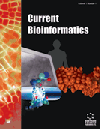- Home
- A-Z Publications
- Current Bioinformatics
- Previous Issues
- Volume 14, Issue 4, 2019
Current Bioinformatics - Volume 14, Issue 4, 2019
Volume 14, Issue 4, 2019
-
-
Morphological Segmentation Analysis and Texture-based Support Vector Machines Classification on Mice Liver Fibrosis Microscopic Images
More LessAuthors: Yu Wang, Fuqian Shi, Luying Cao, Nilanjan Dey, Qun Wu, Amira S. Ashour, Robert Simon Sherratt, Venkatesan Rajinikanth and Lijun WuBackground: To reduce the intensity of the work of doctors, pre-classification work needs to be issued. In this paper, a novel and related liver microscopic image classification analysis method is proposed. Objective: For quantitative analysis, segmentation is carried out to extract the quantitative information of special organisms in the image for further diagnosis, lesion localization, learning and treating anatomical abn Read More
-
-
-
Texture Spectrum Coupled with Entropy and Homogeneity Image Features for Myocardium Muscle Characterization
More LessBackground: People in middle/later age often suffer from heart muscle damage due to coronary artery disease associated to myocardial infarction. In young people, the genetic forms of cardiomyopathies (heart muscle disease) are the utmost protuberant cause of myocardial disease. Objective: Accurate early detected information regarding the myocardial tissue structure is a key answer for tracking the progress of several myoc Read More
-
-
-
Stroke Lesion Segmentation and Analysis using Entropy/Otsu’s Function – A Study with Social Group Optimization
More LessAuthors: Suresh C. Satapathy, Steven Lawrence Fernandes and Hong LinBackground: Stroke is one of the major causes for the momentary/permanent disability in the human community. Usually, stroke will originate in the brain section because of the neurological deficit and this kind of brain abnormality can be predicted by scrutinizing the periphery of brain region. Magnetic Resonance Image (MRI) is the extensively considered imaging procedure to record the interior sections of the brain to Read More
-
-
-
Analysis of Single-Cell RNA-seq Data by Clustering Approaches
More LessAuthors: Xiaoshu Zhu, Hong-Dong Li, Lilu Guo, Fang-Xiang Wu and Jianxin WangBackground: The recently developed single-cell RNA sequencing (scRNA-seq) has attracted a great amount of attention due to its capability to interrogate expression of individual cells, which is superior to traditional bulk cell sequencing that can only measure mean gene expression of a population of cells. scRNA-seq has been successfully applied in finding new cell subtypes. New computational challenges exist in the anal Read More
-
-
-
An Integrated Chikungunya Virus Database to Facilitate Therapeutic Analysis: ChkVDb
More LessAuthors: Priya Narang, Mehak Dangi, Deepak Sharma, Alka Khichi and Anil K. ChhillarBackground: Chikungunya infection flare-ups have manifested in nations of Africa, Asia, and Europe including Indian and Pacific seas. It causes fever and different side effects include muscle torment, migraine, sickness, exhaustion and rash. It has turned into another, startling general medical issue in numerous tropical African and Asian countries and is presently being viewed as a genuine risk. No antiviral treatment or Read More
-
-
-
A Novel Approach Based on Point Cut Set to Predict Associations of Diseases and LncRNAs
More LessAuthors: Linai Kuang, Haochen Zhao, Lei Wang, Zhanwei Xuan and Tingrui PeiBackground: In recent years, more evidence have progressively indicated that Long non-coding RNAs (lncRNAs) play vital roles in wide-ranging human diseases, which can serve as potential biomarkers and drug targets. Comparing with vast lncRNAs being found, the relationships between lncRNAs and diseases remain largely unknown. Objective: The prediction of novel and potential associations between lncRNAs and disea Read More
-
-
-
Structural and Functional Annotation of Conserved Virulent Hypothetical Proteins in Chlamydia Trachomatis: An In-Silico Approach
More LessAuthors: Muhammad Naveed, Muhammad Z. Mehboob, Aadil Hussain, Khadija Ikram, Attha Talat and Nadia ZeeshanBackground: Though after a start of genome sequencing most of the protein sequences are deposited in databases, some proteins remain to be unannotated and functionally uncharacterized. Chlamydia trachomatis L2C is a gram-negative pathogen bacterium involved in causing severe disorders like lymphogranuloma venereum, nongonococcal urethritis, and cervicitis. Objectives: Analyzing and annotating the hypothetic Read More
-
-
-
Gene Subset Selection for Leukemia Classification Using Microarray Data
More LessBackground: Cancer subtype identification is an active research field which helps in the diagnosis of various cancers with proper treatments. Leukemia is one such cancer with various subtypes. High throughput technologies such as Deoxyribo Nucleic Acid (DNA) microarray are highly active in the field of cancer detection and classification alternatively. Objective: Yet, a precise analysis is important in microarray data ap Read More
-
-
-
Biomolecular-Level Event Detection: A New Representation of Generating Short Sentence and Sample Selection Strategy
More LessAuthors: Yang Lu, Xiaolei Ma, Yinan Lu and Zhili PeiBackground: Biomolecular-level event extraction is one of the most important branches of information extraction. With the rapid growth of biomedical literature, it is difficult for researchers to manually obtain information of interest, e.g. unknown information of threatening human disease or some biological processes. Therefore, researchers are interested in automatically acquiring information of biomolecular-level Read More
-
Volumes & issues
-
Volume 20 (2025)
-
Volume 19 (2024)
-
Volume 18 (2023)
-
Volume 17 (2022)
-
Volume 16 (2021)
-
Volume 15 (2020)
-
Volume 14 (2019)
-
Volume 13 (2018)
-
Volume 12 (2017)
-
Volume 11 (2016)
-
Volume 10 (2015)
-
Volume 9 (2014)
-
Volume 8 (2013)
-
Volume 7 (2012)
-
Volume 6 (2011)
-
Volume 5 (2010)
-
Volume 4 (2009)
-
Volume 3 (2008)
-
Volume 2 (2007)
-
Volume 1 (2006)
Most Read This Month
Article
content/journals/cbio
Journal
10
5
false
en


